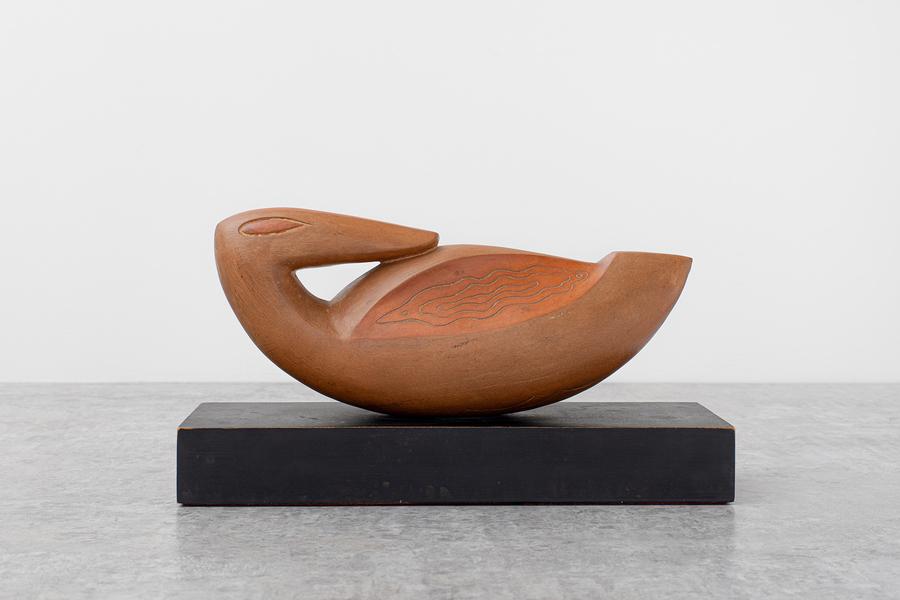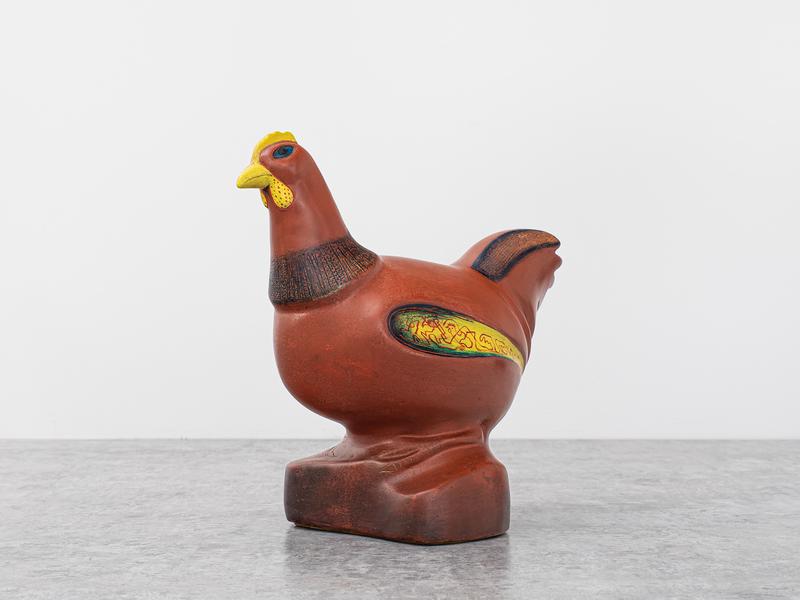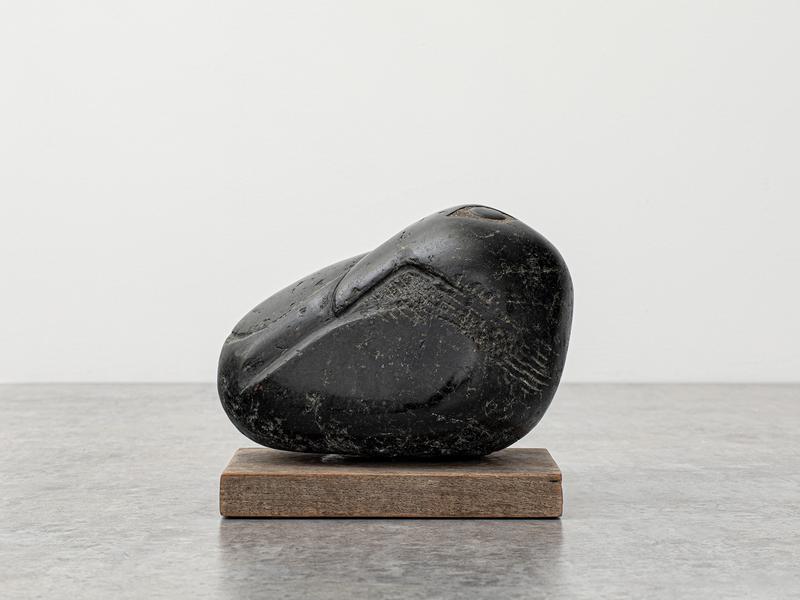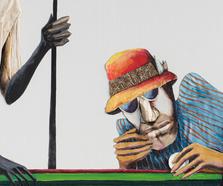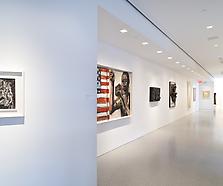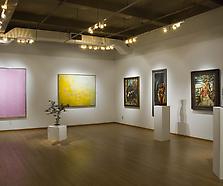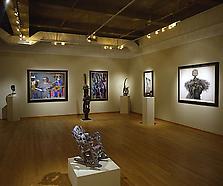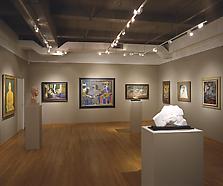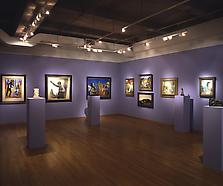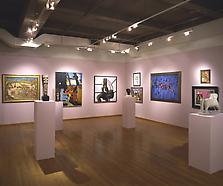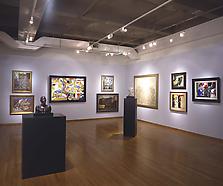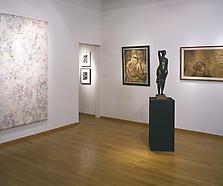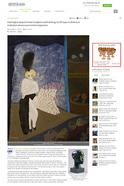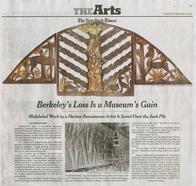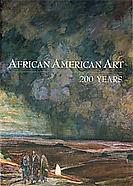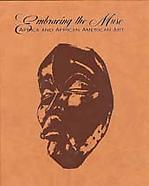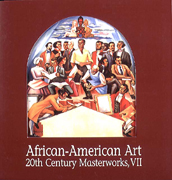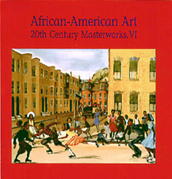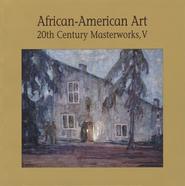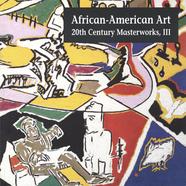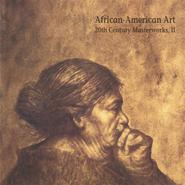Born in Boston and orphaned in 1902, Sargent Johnson was raised by relatives in Washington, D.C. and Alexandria, Virginia, including the respected sculptor May Howard Jackson, who introduced him to the world of sculpture. As a youth, Johnson attended boarding school in Worcester, Massachusetts and later enrolled at the Worcester Art School. In 1915, after brief stays in Boston and Chicago, he moved to San Francisco and studied at the A.W. Best School of Fine Art and the California School of Fine Arts, where he worked with Ralph Stackpole. He also studied sculpture privately with Benjamino Bufano. During the mid 1920s and early 1930s, Johnson gained critical recognition for his small-scale figurative work and won several awards from the Harmon Foundation. Inspired by American regionalism, Mexican mural painting, and the philosophies of Alain Locke, Johnson’s work of the early 1930s incorporates natural materials, colorful glazes and streamlined forms. In 1936, he was one of the first artists hired by the California WPA, and he quickly advanced to become a unit supervisor. The low-relief sculptural murals he designed while
Sargent Johnson (1887-1967)
Exhibitions
New & Noteworthy
Prints & Publications
Artist Information
working for the WPA allowed him to expand his interest in the human form to a heroic scale, and the mural he created for San Francisco’s Maritime Museum enabled him to work with mosaic for the first time. In 1944 and again in 1949, Johnson was awarded an Abraham Rosenberg Scholarship that provided him with funding to visit Mexico and reinforce his interest in the simplified forms and geometric design elements found in ancient Mexican architecture and pottery. During the late 1940s, Johnson’s work became increasingly abstract, but he never abandoned his interest in the human figure. He continued to live and sculpt in San Francisco until his death in 1967. In 1970, the Oakland Museum organized the first retrospective of Johnson’s work, reaffirming his importance as an innovative modernist sculptor. In 1998, the San Francisco Museum of Modern Art organized Sargent Johnson: African American Modernist and published the first comprehensive monograph.

